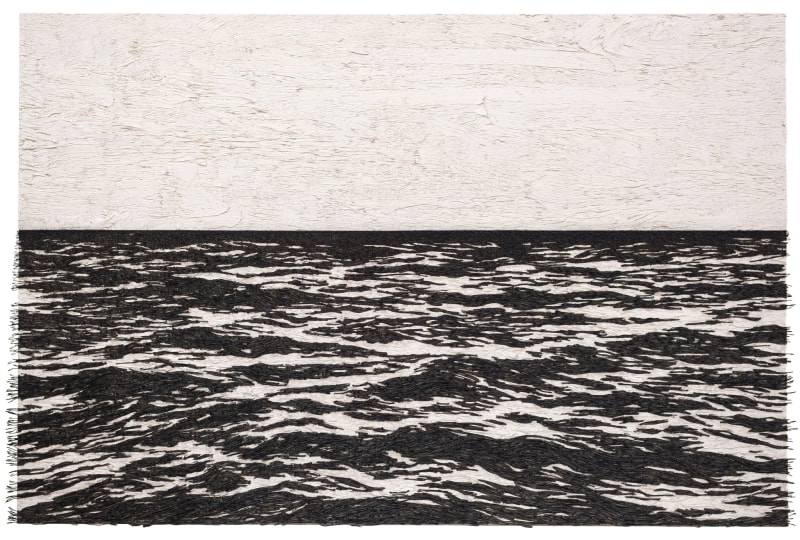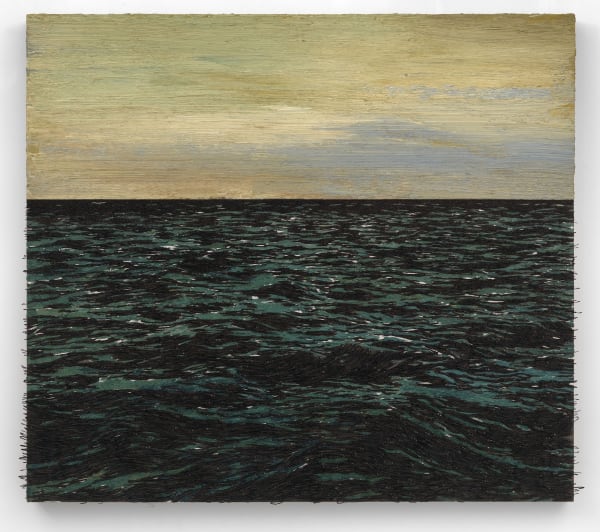YOAN CAPOTE: Isla
Ben Brown Fine Arts is proud to present ISLA, Yoan Capote's second solo exhibition with the London gallery. As the Cuban art scene continues to garner international attention, Capote has emerged as a pioneering figure in this rapidly expanding community of acclaimed artists. Capote explores a multiplicity of universal themes in his work, from the human condition to cultural identity, migration and politics. This exhibition focuses on Capote's iconic 'fishhook paintings' andis comprised of twelve seascape paintings, conceived by the artist as an installation for the gallery space in which the vanishing points seemingly merge into one continuous horizon line, surrounding the viewer with their watery depths.
From the calm, serene oblivion of Isla (Olvido) (2014) to the driving rain-pummeled seas of Isla (Mar de Nubes) (2015) and the vast, breathless skies and careful optimism of Isla (Punto de Fuga) (2015), they reflect the contrary impulses, obsessions and conflicts that are so intrinsic to the human condition. Capote's voyage of seeing takes us through the spectrum, from the pink skies of daybreak in Isla (Albedrío) (2014) to the inky depths of Isla (Nada) (2015). They are not merely representations of the sea and sky but explorations of spiritual and physical boundaries. Water and air, dawn and night, hope and despair - Capote is a restless creator for whom nothing human is beyond range.
Capote's seascapes stem from his childhood memories of growing up on a politically isolated island, with a strong desire to know the United States and beyond. Capote notes, 'The sea is an obsession for any island population…When I was a child, I looked to the horizon and would imagine the world beyond. The sea represents the seductiveness of these dreams, but at the same time danger and isolation.' As the viewer draws nearer to the surface, these supremely painterly and seemingly benevolent seascapes reveal themselves as powerful images, intimating danger and ambiguity. Thousands of fish hooks are fastidiously attached to the painting's surface, creating tension between beauty and seduction, and danger and entrapment. The occasional traces of blood found on the fishhooks speak of the very real dangers entwined with the dream of migration.
Capote's works have the power to not only engage with his personal experiences growing up in a politically unstable and insular nation, but to simultaneously convey a universality that transcends the autobiographical. His works reinterpret and expand on the ubiquitous theme of marine painting, so prominent not only in Cuban art, but throughout the art historical cannon.













